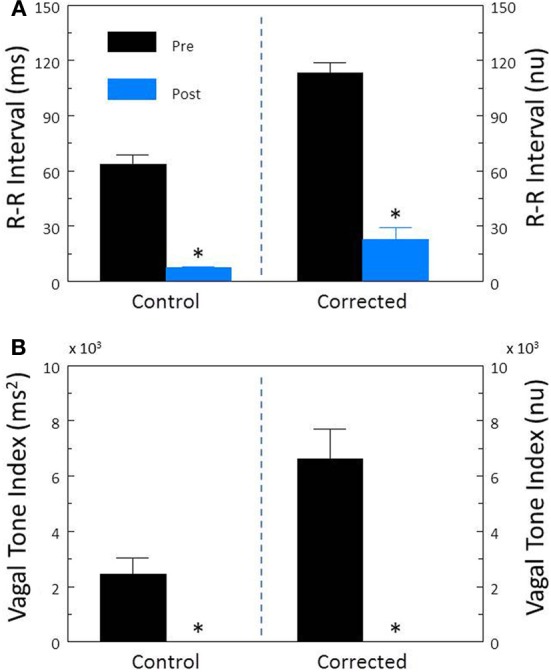Figure 4.

The effect of the cholinergic receptor antagonist atropine on heart rate variability. The effect of atropine sulfate (50 μ g/kg i.v.; n = 25) on total heart rate variability (standard deviation of R-R interval, RRSD) without and with correction (RRSD/mean RRsec) are displayed in (A). The effects of this drug on the high frequency variability (cardiac vagal tone index, 0.24–1.04 Hz) without and with correction [cardiac vagal tone/(mean RRsec)2] are shown in (B). Note that despite correction for large increases in heart rate, atropine still provoked large reductions in both RRSD and the cardiac vagal tone index. Thus, cardiac parasympathetic activity is responsible for a large portion of the heart rate variability independent of changes in HR. *P < 0.01 pre (black bars) vs. post (blue bars); pre = last 30 s before atropine administration, post = 30 s interval recorded 5 min after atropine treatment. nu, normalized units following HR correction.
